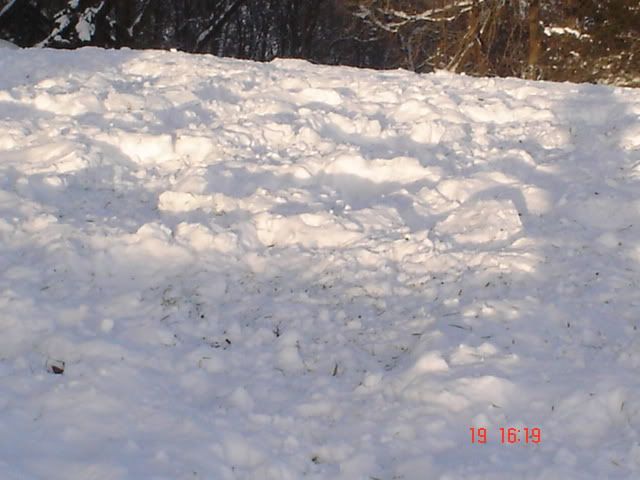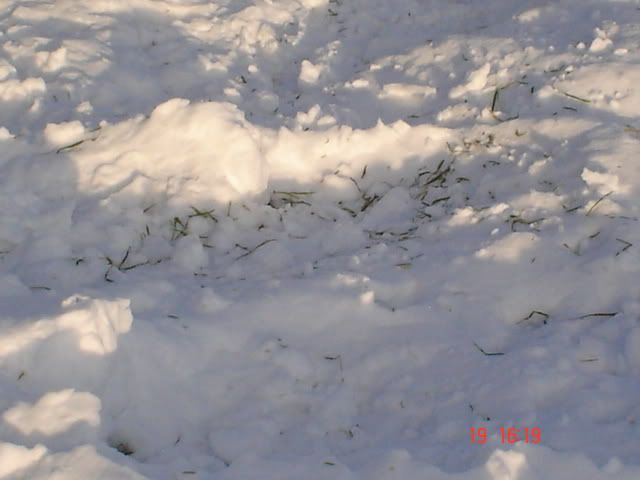December 16th, 2010
Every morning when I rise, I start the day with one basic desire...to shine for Christ. I'm thankful then that I can honor God with my life by offering help and encouragement to other landowners who share my passion for both habitat and whitetails. Those are very personal statements but I feel it is important some times to make clear my motivation for spending so much time and effort helping others with habitat problems.
I am not interested in telling others to plant any specific food source or making major habitat changes unless I know without the slightest doubt that if landowners combine ALL the pieces of the puzzle...they will be successful in their endeavors to hold more and better whitetails on their property.
Having shared that...I can say without hesitation that after 50 years of working with all types of cereal grains that winter rye can be utilized as one of those habitat pieces that completes the puzzle. I would never recommend it if I did not have complete confidence in not only it's attractiveness to whitetails but it's usefulness to our soils as well.
I would like to share a case in point where deer are clearly choosing winter rye over winter wheat literally in droves. I have a close friend who owns a farm next to one managed by Lee and Tiffany Lakosky here in SE Iowa that offers a very real perspective on this subject.
Lakosky's own very little land outright but rather are partners with investor friends and that combination has allowed them to have at least an interest in some of the finest hunting land in Iowa. They have not "created" this great habitat but were just smart enough to see some great property that offers a large enough chunk of cover to hold mature whitetails.
Despite grossly exaggerated claims of "hundreds of acres of food plots" they in fact have very few in what most of us would call "food plots" and on the farm next to my friends they have perhaps 3 acres at best. They do have the farmer who leases their ag fields leave standing corn...smart of course but they had no involvement in planting them, that corn however does factor into this equation.
This is a view of some of Lakosky's that is adjacent to my friends place and you can see the standing corn next to some awesome timber.
Now corn is a great draw and I would be surprised if you don't see some kills on their TV show from that spot and you would think that every deer in the area would in fact be...in that field!
I'm going to share a series of pictures however that shows something very different then even I would have expected and this is the second year in a row this has happened.
This picture is a very hidden food plot on Lakosky's and it's planted to winter wheat...no reason that I can imagine for deer to even consider jumping the fence to eat winter rye...if in fact they had even the slightest preference for wheat!
so far as i could see...there is not so much as a track in that field although surely they have spent some time there as well. This pic is standing in the Egyptian Wheat on my friends place simply to verify this is in fact literally next to his property and only yards away from the rye plots I planted for him.
As I mentioned..L&T have some awesome cover...that is a fact but there are beat down runways coming from right beside that wheat to my friend place.
Where they are well screened just as they would be with natural cover on Lakosky's
Our rye/oat/pea/radish plots are covered with tracks and at this point the oats have long ago frozen off
Sign is everywhere
The peas decimated a month ago
The forage radish tops have been murdered
leaving only the radish roots
and the winter rye behind
I stuck a trail cam out in this plot which is roughly 5 acres in size...so while we get hundreds of pictures they are probably only a fraction of the overall deer feeding here. Unless they happen to walk by the cam within 20 yards or so...we don't get pics of them , my point being that whatever you see here is just the tip of the iceberg so to speak.
With awesome cover, standing corn and a hidden winter wheat plot right beside this property...why on earth would this buck be feeding on winter rye???
What are any of the following deer doing here at all??
Does any of this make sense? What the heck is going on here?
There a number of factors....first..."wheat" is not some magical sweeter then sugar better then anything draw! It doesn't taste better and I'm not sure it tastes worse but since rye is higher in protein then wheat AND it grows later into cold weather then wheat, it doesn't take a rocket scientist to figure out that deer are going to choose it when they can.
Now....what else is going on here??? Why is this field covered up with deer??
What are L&T missing???
Like most hunters they are missing the boat by ONLY planting "hunting" plots which means most of the year deer have nothing to eat on their farm! Now if you were a hungry deer and all winter long you could find winter rye under the snow, if in April you found lush clover and it was there all summer....where would you go to find food?
If every single day of the year you knew you could get out of bed (where you have been safe and unmolested in a sanctuary) and now without question where you could fill your belly...why would you ever look elsewhere??
So...these deer have adapted to the fact that we provide YEAR AROUND food sources...right next to thick cover, well screened safe feeding areas, fields of switchgrass, apple orchards, hybrid oaks and...hopefully you get the picture.
L&T have done none of those things except for purchasing large areas of timber that do in fact become sanctuaries but...obviously that alone is not enough...habitat is not about rye versus wheat...it's about the WHOLE package!!
If you don't provide the whole package, you will be frustrated and tempted to blame your lack of deer or mature bucks on the type of food source you plant and until you accept that you will never solve the real problem.
These pictures are from a year ago in the same field...the same week and I sat in a blind and watched with my own eyes deer walking through standing corn to get to these strip plots of rye and brassicas.
It's not a fluke, it's not just on his farm...it's the same way on mine and everyone who provides ALL the things whitetails need year around. Neither rye nor wheat are the answer nor will either one be the reason for disappointment...something much more serious and significant is....































































